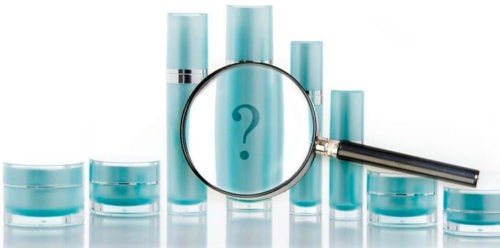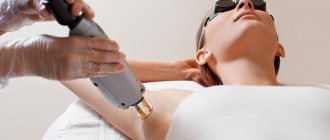Silicones can be found everywhere: in creams, serums, shampoos, hair styling products... They have become to the cosmetics industry what Lycra is to our tights! An irreplaceable thing, necessary, but why? What are the advantages of silicones in our cosmetics? What problems might they present? Let's figure it out.
SILICONES: WHAT ARE THEY?
Silicone is a synthetic and inorganic polymer obtained as a result of chemical transformations of quartz. If quartz is a natural raw material, then its final result is completely synthetic. This is a "plastic" component.
Depending on the nature of the organic group and the polymerization conditions, silicones can have different structures and textures, ranging from the most fluid (oil) to the hardest (wax, paste, etc.).
Thus, the term "silicone" does not refer to a specific ingredient, but rather to a large family of compounds with special properties that open up a wide range of applications. This is why you can find silicones in your shampoo, as well as in cake tins, all plumbing sealants, lubricants, adhesives, baby accessories, surgical prosthetics, implants, etc. Regardless of their purpose, they provide elasticity, flexibility and softness to the product.
Medical products:
- Single-channel silicone tubes are used for transporting various media, as elements of peristaltic pumps and for other medical purposes.
- Silicone drainage catheters of 2, 3 and 4 channels are used for drainage of the bladder and renal pelvis with and without simultaneous irrigation.
- Silicone T-tubes - used for drainage of bile ducts in surgery, gynecology and urology.
- Dual-channel silicone drainage tubes are used for aspiration and lavage treatment, with air flow, of suppurative processes of various localizations, including the treatment of purulent peritonitis.
- Medical tubes of various sections made of PVC - used for drainage in general surgery, blood transfusion, assembling medical products for instruments and devices.
- Stoppers are made from biologically inert silicone for sealing bottles of blood, blood substitutes, infusion solutions, injection powders, antibiotics, bacteriological and biological preparations.
- Silicone parts - manufactured by the mold method: bellows, plates, etc. are intended for the manufacture and assembly of medical devices and devices.
- Fabrics with silicone coating - based on cotton textiles - are used in medicine for sewing shoe covers, aprons, covers for mattresses and pillows, etc.
Physical and mechanical properties of silicone medical products
| Conditional tensile strength, not less, MPa (kgf/cm2) | 6,5 (65) |
| Elongation at break, not less, % | 300 |
| Change in relative elongation after aging in air for 72 hours at a temperature of 200 °C, within, % | -25% ÷ 25% |
| Hardness, units Shore A, within | 50 – 70 |
| Operating temperature range, °C | -60°С ÷ 200°С |
Sanitary and chemical indicators:
| Oxidability, no more than, mg O2/100 cm3 | 3 |
| Changes in pH of the extract | ±1 |
Physical and mechanical properties of PVC pipes for medical purposes
| Tensile strength, MPa, (kgf/cm2) | 15 (150) |
| Elongation at break, % not less | 150 |
Sanitary and technical indicators:
| Oxidability, no more than, mg O2/100 cm3 | 3 |
| Changes in pH of the extract | ±1 |
| Content of diethyl phthalate in extracts, mg/l, no more | 2 |
Resistance to chemical environments:
- Water, blood, blood substitutes, saline solutions.
- Hydrogen peroxide, ethyl alcohol.
Notes:
- We are expanding the range of medical products at the request of medical equipment enterprises and other industries.
- All products have hygienic certificates.
JSC "NIIRP" supplies molded and non-molded medical products made of silicone at manufacturer's prices. The company develops and produces silicone products for medical purposes; there is a certificate of conformity for the products.
The range of silicone products used in medicine includes plates, cords, caps for containers, single-channel, multi-channel and T-shaped medical silicone tubes, etc. In accordance with the current sanitary and hygienic rules, the following requirements are imposed on medical products made of silicone:
- biological inertia;
- resistance to chemicals;
- operating temperature range - from –60 to 200 °C;
- possibility of repeated thermal sterilization and disinfection treatment.
JSC Scientific Research Institute of the Rubber Industry produces a wide range of rubber products for healthcare institutions. Also develops non-standard rubber goods in accordance with the individual wishes of the customer.
In the manufacture of rubber goods for medicine, non-toxic materials and components are used, selected to give the finished product certain operational and physical characteristics. The quality of products sold is confirmed by sanitary and hygienic conclusions and certificates.
WHY ARE SILICONES ADDED TO COSMETICS?
We all love having silky, shiny hair and makeup that lasts all day. The synthetic ingredient responsible for these results is usually silicone. They were first added to cosmetic products in the 1950s.
Silicones go by different names (this is one of the most famous) and are modified in many different formulas to perform a specific role: seal, retain moisture, adhere to color pigments, protect hair and make it soft and silky. In skin care, they help avoid the feeling of greasy or sticky upon application. They provide deodorants with the ability to dry quickly and sunscreens with water resistance.
Silicones come under a variety of names, most often ending in "xane", "ane", "thicone" or "thiconol" in the form of more or less volatile oils or waxes.
The silicones most commonly used in our creams or serums are dimethicone (high molecular weight waxes, protective coatings, fillers), cyclopentasiloxane and cyclomethicone (highly volatile, they provide a non-greasy and slippery feel).
Depending on their volatility, they lie in a more or less thick layer on the epidermis. The product glides onto the skin and leaves a feeling of incomparable softness. Miracle! The skin becomes silky and velvety in a matter of seconds. Yes, but it's not your skin that is smooth and soft, it's the silicones that cover it.

Epidermis in section

Epidermis in section, covered with silicones
The microrelief of the skin, its pores, imperfections, fine lines are partially filled with this layer of “plasticizer”, represented by a dark gray color on the 2nd section.
Parabens, sulfates and silicones: chemistry in the service of beauty?
Are parabens, sulfates and silicones as harmful as they like to write about them on the Internet? And why are they even needed in cosmetics? Let's have a little chemistry lesson...

What to do: Don't panic. The harm of parabens has not been proven. They extend the shelf life of cosmetics up to two years, while products without parabens “live” no more than two weeks and require mandatory storage in the refrigerator. In addition, abandoning conventional cosmetics in favor of “bio” is not a panacea: recent discoveries by scientists confirm that parabens are found even in plants - for example, in blueberries and sorrel.
Sodium lauryl sulfate (SLS). This is one of the most common surfactants, which is added to cosmetics to cleanse and create foam. Lauryl sulfate is mainly found in shampoos and shower gels. Its disadvantage is that it is a petroleum product and can damage the epidermis. The most common reaction after using cosmetics with SLS: dryness, skin irritation, and the appearance of hives. Shampoos with lauryl sulfate can cause dandruff and even hair loss. However, some studies suggest that only products containing more than 2% SLS have side effects. Well-known brands do not exceed this norm, and to reduce harm, they mix it with other, softer and more gentle surfactants.
What to do : if you use a product with SLS, dermatologists recommend changing it when it runs out. Manufacturers always write on the packaging that there are no sulfates in cosmetics.
Silicones. Cosmetics manufacturers simply adore them, adding them to face creams, makeup smoothing bases, shampoos, and styling products! Silicones form a protective film on the surface of the skin, preventing moisture from evaporating. They are a constant companion of moisturizing cosmetics for dry skin. Silicones also soften coarse, unruly hair and make it easier to comb. They are added to styling products to give hair a glossy shine. Some dermatologists and trichologists see the harm of silicones in the fact that these substances are difficult to wash off with water and they tend to accumulate. Because of this, over time, an invisible film forms on the surface of the skin, which disrupts the cellular respiration of the skin and provokes inflammation. Silicones on the hair can weigh it down and deprive it of volume.
What to do: don't be afraid of silicones! There are professional shampoos on sale for deep cleaning of hair that remove silicones and styling residues. It is enough to use them only once a week. If you cleanse your face according to all the rules - use a tonic in addition to milk or gel for washing - silicones will not harm the skin.
ARE SILICONES TOXIC?
Most silicones used in cosmetics, including the essential dimethicone, are inert and not toxic to skin or hair. But if we are talking about “cyclo...”, in particular cyclotetrasiloxane, cyclohexasiloxane and cyclopentasiloxane, these are very volatile silicones, they are potentially carcinogenic and can cause hormonal, reproductive, and endocrine disorders.
If their toxicity varies from one form to another, then ALL silicones are a source of environmental pollution! Being chemically inert, they are especially stable, their biodegradability reaches 500 years. The production and use of silicones on a very large scale and their accumulation pose a real threat to our environment.
| The January 2020 European Directive prohibits the use of cyclotetrasiloxane and cyclopentasiloxane in wash-off cosmetic products at a dose >0.1% of the product. This applies to all products such as shampoo, conditioner, conditioner, as silicones end up in wastewater. This ban, passed in January 2020, will come into force in 2020. |
This is why it is very important to learn how to decipher the ingredients of cosmetic products on the label or use organic cosmetics.
Benefits of dimethicone
- Forms a thin invisible film on the skin, which envelops the upper layer of the dermis and evens out all its minor cosmetic imperfections. The result is perfectly smooth skin.
- The content of dimethicone in facial cosmetics protects the skin from the harmful effects of the environment without causing irritation.
- Balms and shampoos with this substance make hair manageable and elastic, making it easy to comb. The hair can be easily styled and holds its shape perfectly.
- Silicones gently cover each hair along the entire length with an invisible film, the hair acquires additional shine, and the hairstyle gains fullness and volume.
- Due to dimethicone, the consistency of any cosmetic product improves, it lies on the skin more evenly and retains its color and shine longer. Thanks to this property, it is often added to cosmetics: makeup bases, lipsticks, eyeliners.
Dimethicone in cosmetics is officially approved for use in the beauty industry.

DO SILICONES HAVE A BENEFICIAL EFFECT ON THE SKIN?
No! Silicones are inert compounds that the skin does not recognize. Their chemical structure does not allow (or allows little) them to penetrate the epidermis. Depending on their shape and viscosity, silicones can form a more or less covering layer on the skin, partially impede breathing and clog pores, which can ultimately lead to acne. Moreover, even if they can to some extent help protect the skin from external influences, they do not participate in its normalization and nutrition. As with mineral oils, the skin becomes dependent on this type of product, lazy and vulnerable.
IS IT POSSIBLE TO REPLACE SILICONES?
You can often hear that their use is inevitable, in particular due to the lack of alternative ingredients of natural origin that are as effective. This issue is a real headache for organic cosmetics, which prohibit the use of silicones and which, as we know, are often ineffective when it comes to hair products.
However, in organic cosmetics, silicones are replaced with vegetable oils (jojoba, argan, apricot kernels), which also create a feeling of softness and elasticity.
Recently, “vegetable silicone”, obtained from algae using biotechnology, has appeared on the cosmetic ingredient market. It represents an interesting alternative, but so far it has been used very little in cosmetics.
How to reduce the harmful effects of dimethicone on the body
To avoid the harmful effects of cosmetics containing dimethicone, it is necessary to thoroughly cleanse the skin every day with additional products.
- Regular lotions and tonics may not be enough for this, since oily substances are practically insoluble in water.
- It is advisable to cleanse the skin with a soft scrub, and the hair with special shampoos that help remove stubborn dirt.
- It is recommended to give your hair a break from “silicone” products, using homemade masks for skin and hair during this period.
- If you regularly cleanse your skin and hair of remnants of cosmetics containing dimethicone, the risk of damaging your beauty will be reduced to zero.









